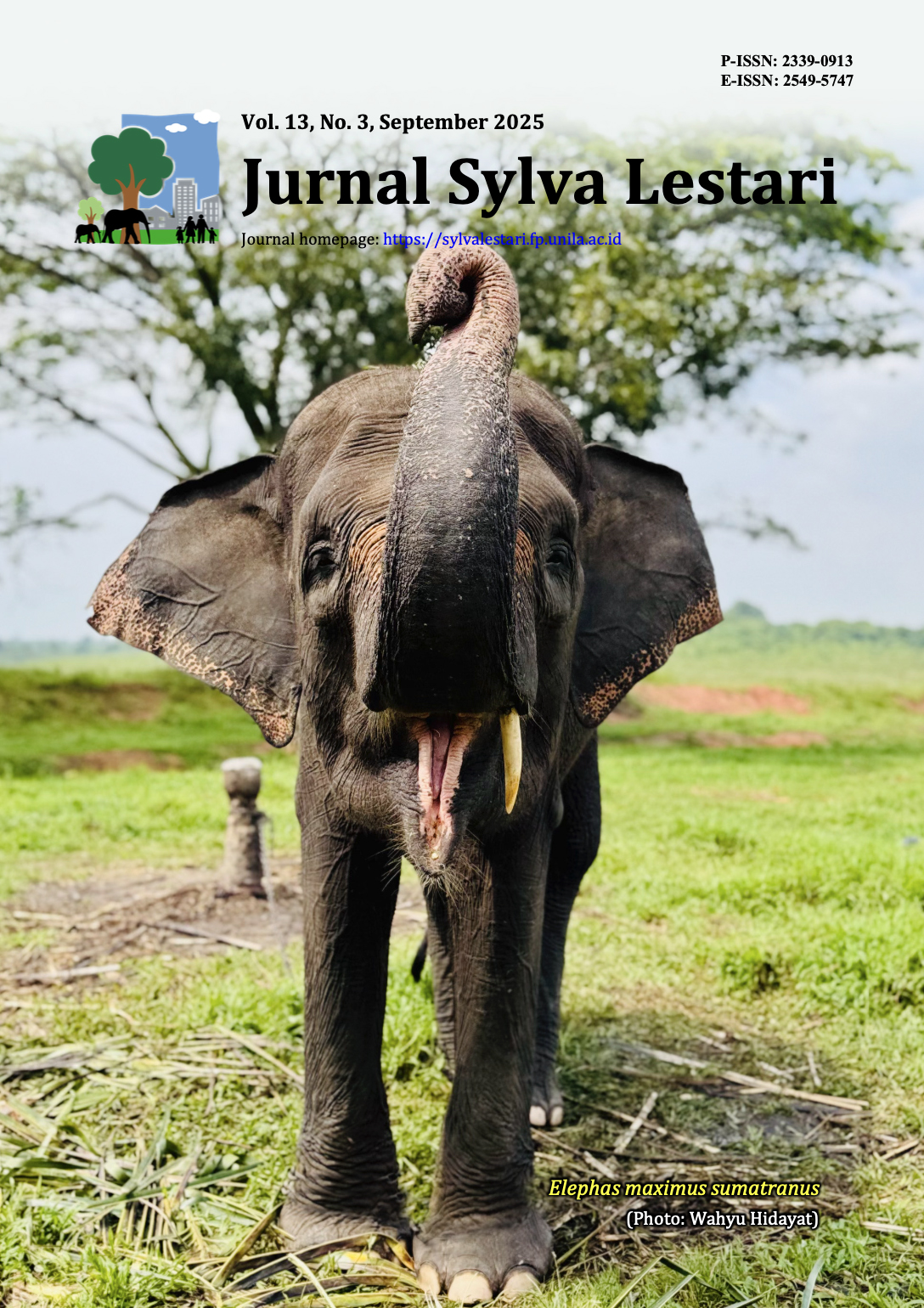Antidiabetic Activities of Agarwood (Aquilaria malaccensis) Leaf Extracts via Enhanced Insulin Secretion in BRIN-BD11 Pancreatic Beta-Cells
DOI:
https://doi.org/10.23960/jsl.v13i3.1197Abstract
Agarwood leaves (Aquilaria malaccensis), a non-timber forest products, shows significant potential as a source of antidiabetic compounds. This study aims to evaluate the antidiabetic activity of agarwood leaves and their cytotoxicity on pancreatic beta-cells, as well as predict their compound bioactivity through an in silico approach. The leaves were extracted using ethanol, water, and a mixture of ethanol–water with the assistance of ultrasound irradiation. The extracts were then tested in vitro for their antidiabetic potential by assessing their ability to inhibit the alpha-glucosidase enzyme and their effect on insulin secretion, as well as their cytotoxicity on BRIN-BD11 pancreatic beta-cells. The phytocompounds in the extract were identified using liquid chromatography-mass spectrometry, and their binding behavior was studied by in silico molecular docking. Among the three, the ethanol–water extract showed the highest extraction yield. Cytotoxicity assays revealed that the ethanol–water extract was cytotoxic at high concentrations (1000 µg/mL), but safe at lower concentrations. The alpha-glucosidase inhibition was relatively weak. Nevertheless, the extracts significantly stimulated insulin secretion in BRIN-BD11 cells up to fivefold compared to untreated cells. In silico studies indicated that xanthone glycoside, flavonoid glycoside, and coumarin compounds exhibit strong binding affinities to multiple insulin-secretion-related proteins. These findings suggest that agarwood leaf extract, particularly ethanol–water extract, possesses promising antidiabetic activity through an insulinotropic mechanism.
Keywords: agarwood, alpha-glucosidase, insulinotropic, molecular docking
Downloads
Downloads
Published
How to Cite
Issue
Section
Statistics
 Abstract views: 217 times
Abstract views: 217 times PDF downloaded: 124 times
PDF downloaded: 124 times
Metrics
License
Copyright (c) 2025 Yanico Hadi Prayogo, Rita Kartika Sari, Zikri Hamidi, Wasrin Syafii, Eva Harlina, Bayu Febram Prasetyo

This work is licensed under a Creative Commons Attribution-NonCommercial 4.0 International License.
Authors retain copyright and grant the journal right of first publication with the work simultaneously licensed under a Creative Commons Attribution-NonCommercial 4.0 Licence that allows others to share the work with an acknowledgement of the work's authorship and initial publication in this journal.
Authors are able to enter into separate, additional contractual arrangements for the non-exclusive distribution of the journal's published version of the work (e.g., post it to an institutional repository or publish it in a book), with an acknowledgement of its initial publication in this journal.
Authors are permitted and encouraged to post their work online (e.g., in institutional repositories or on their website) prior to and during the submission process, as it can lead to productive exchanges, as well as earlier and greater citation of published work (See The Effect of Open Access).









